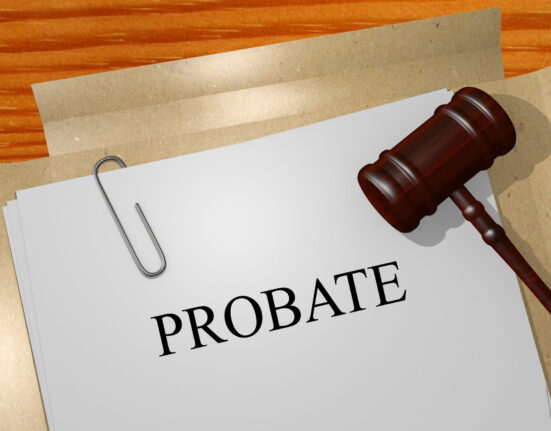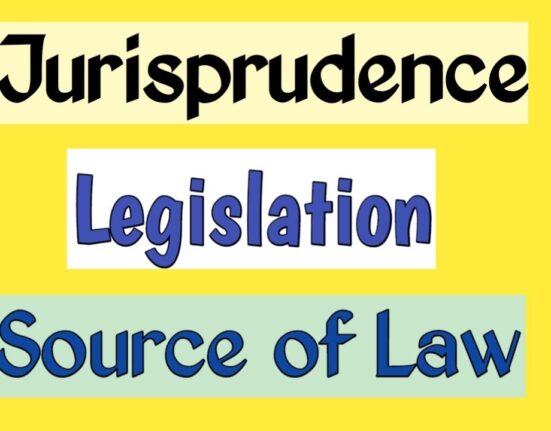H. Aishwarya, a 3rd-year B.A.LL.B.(Hons.) student from PES University, Bengaluru has written this Article on “Criminal Conspiracy under Indian Penal Code”.
Introduction
Conspiracy refers to a combination of two or more persons. It refers to an agreement which exists between two people who are willing to commit an illegal act. Criminal Conspiracy which is defined under Indian Penal Code comes under substantive offence. Generally, The accused will face charges of Criminal Conspiracy and other relevant offenses under Indian Penal Code or other laws. Chapter V-A of the Indian Penal Code was introduced in 1913 to include the offense of Criminal Conspiracy.
Background of the offense of Criminal Conspiracy
The term “conspiracy” originally referred to an arrangement between two or more people to bring a fraudulent legal claim against someone or to conduct court procedures in an obnoxious or improper manner. The Star Chamber initially developed the criminal component of conspiracy in Poulterer’s case (1611). In this case, the conspiracy was acknowledged as a substantial offense.
The case’s basic facts are as follows:
One defendant, together with other defendants, falsely accused Stone of robbery and actively sought to harm his family’s reputation. There were rumors that Stone was a knave and a gentleman thief. However, Stone had a witness list of about 30 to prove his whereabouts on the day of the alleged heist. Stone was released after the jury determined that he was an idiot. Stone presented his case to the Star Chamber to clear his name and refute the accusations against him.
The defendants attempted to settle the dispute out of court while also persuading Stone to drop the lawsuit. The defendants, however, accused Stone of barratry when the proceedings got underway and allegedly threatened several of his witnesses. Regardless of whether Stone was wrongfully charged or cleared, the court ruled that the mere existence of a conspiracy among the defendants constituted the primary offense and qualified as a crime.
“A conspiracy consists not merely in the intention of two or more but also in the agreement of two or more to do an unlawful act by an unlawful means,” the House of Lords said in Mulcahy v. R. (1868). Therefore, two or more people must agree to carry out the plan, and the plot itself is an act punishable for a criminal object or the use of a criminal means as long as it is based only on intention. Prior to the addition of Chapter V-A, there were only two ways that conspiracy under the I.P.C.
- Through the aid of Section 107 I.P.C.
- By participation in a specific offense (Sections 310, 401, and 400 I.P.C.)
Amendments
After that, in 1870, Section 121A was introduced, which set forth penalties for conspiring to commit offenses covered by Section 121, i.e., conspiring to wage or attempting to wage war against the Government of India. Thus, it is evident that prior to 1913, conspiracy as a whole was not a felony under the I.P.C. Criminal conspiracy was made a substantive offense via the Criminal Law Amendment Act of 1913. It resulted in the addition of Chapter V-A to the I.P.C.
Defining the term “Criminal Conspiracy” (Section 120A of IPC)
Criminal conspiracy is defined by Section 120A of the I.P.C. as an agreement between two or more people to carry out or cause to be carried out-
- Either a criminal act or a legal action obtained through illicit means.
- Section 43 of the IPC defines “illegal” as anything that amounts to a crime, is forbidden by law, or results in a civil lawsuit.
According to the proviso attached to Section 120A, there is no need to prove overt conduct or illegal omission in order for there to be a criminal conspiracy—merely agreeing to commit a crime qualifies. An overt act is required only when the goal of the conspiracy is the performance of an illegal act that does not constitute a crime. In such cases, overt action must be taken to fulfill the conspiracy. Whether the illegal behavior is the agreement’s primary goal or is just a byproduct of it is irrelevant.
Essential ingredients involved under “Criminal Conspiracy”
- There must be at least two conspirators in order for an illegal conduct or an otherwise legal act to be performed or caused to be performed. In cases where other conspirators are unidentified, absent, or deceased, an individual may be charged with criminal conspiracy alone.
- It takes two people to commit unlawful conduct or an otherwise legitimate act using unlawful means.
Punishment in case of “Criminal Conspiracy” (Section 120B of Indian Penal Code)
Section 120B of I.P.C. provides for the punishment of criminal conspiracy-
- Where the criminal conspiracy is to commit a serious offense: In cases where the conspiracy is to commit an offense-
- Punishable with death,
- Imprisonment for life or
- Rigorous imprisonment for a term of two years or upwards
- and where no express punishment is provided under the Code for such conspiracy
All individuals involved in a criminal conspiracy shall be punished as if they had abetted the offence.
- Criminal conspiracy to commit offenses other than those in the first category. Anyone who participates in such a criminal conspiracy will be punished with either type of imprisonment for a term not to exceed six months, a fine, or both.
Proof for “Criminal Conspiracy” under Indian Penal Code
Criminal conspiracy offenses may be proven using direct or inferential evidence. It is nearly impossible to present any conclusive proof regarding the date on which a criminal conspiracy was formed, the participants, the purpose of the conspiracy, or the manner in which the purpose is to be carried out because conspiracies are typically developed in covert and private settings. All of this can be inferred, more or less.
Section 10 of the Indian Evidence Act, 1872
Section 10 of the IEA establishes that in a criminal conspiracy, the act of one conspirator is attributed to others. The admission of evidence in a conspiracy case is covered in Section 10. It stipulates that anything said, done, or written by one of the conspirators on their shared objective may be used against all of the conspirators in order to establish the existence of the conspiracy or the participation of any particular individual in it. However, before such a truth may be acknowledged, the following requirements must be met:
- There must be solid evidence that two or more people planned to commit an offense or a legally actionable violation.
- Anything that any one of them says, does, or writes regarding their shared goal will be used as evidence against the others as long as it is done so after the time when any one of them first established that intention.
Landmark Case Laws
Parveen v. State of Haryana[1]
The case’s basic facts are as follows:
Four suspects were transported by rail from the Central Jail in Jaipur to the CJM Court in Bhiwani. Four young lads entered their compartment at Nangal Pathani Railway Station. They attacked the police team and attempted to free the accused. In addition to attempting to grab the official carbine, the accused who was in detention also tried to flee. The Head Constable was allegedly shot by one of the defendants, suffering injuries before eventually passing away. One of the defendants was caught, but the other three escaped.
Sections 224, 225, 332, 353, 392, 307, 302, and 120-B of the IPC, as well as a few offenses under the Arms Act, were utilized to charge the defendants. The Sessions Court found the defendants guilty, and after an appeal, the High Court of Punjab and Haryana upheld their judgment. Parveen @ Sonu, the appellant, filed an appeal with the Supreme Court.
According to the Honorable Supreme Court, it is risky to convict someone of violating Section 120B of the I.P.C. in the absence of proof that the conspirators had a common goal of conducting an illegal act. In the absence of any more corroborating evidence, the Court ruled that the appellant should be declared innocent and that it would not be prudent to uphold the accused’s conviction based on the supposed confessional remarks of the co-accused.
Kehar Singh and others v. State (Delhi Administration)[2]
In this instance, the Honorable Supreme Court ruled that an agreement between two or more people to commit an illegal act is the most crucial element of the conspiracy crime. The act remains illegal and punishable, regardless of whether it is executed according to the agreement.
Major E.G. Barsay v. The State of Bombay [3]
In this instance, it was decided that the essence of the criminal conspiracy crime under Section 120A IPC is an agreement to break the law. Even if the illegal conduct that the parties to such an agreement agreed to do has not been carried out, they are still guilty of criminal conspiracy. The Court further ruled that the performance of multiple illegal acts can constitute a conspiracy and that the agreement of all parties to commit a single illegal act is not a requirement for the crime of criminal conspiracy.
Leo Roy Frey V. Suppdt. Distt. Jail[4]
In this decision, the Honorable Supreme Court ruled that a conspiracy to commit a crime is a distinct offense from the crime that the conspiracy was intended to commit. A conspiracy is established before the crime is attempted or committed, and it is finished before the crime is committed.
Ram Narain PoplI v. C.B.I.[5]
In this case, the Supreme Court ruled that Section 120B criminal conspiracy convictions could be obtained by showing only that two or more people had agreed to commit illegal conduct or an act by illegal means.
Topandas v. State of Bombay[6]
In this instance, the appellant and three other people were charged with an offense for conspiring to use falsified documents under Section 120B read with Sections 471 and 420 I.P.C. The Trial Court cleared every defendant, but the High Court overturned that decision in an appeal. The court found the appellant guilty of both the substantive offense and the crime of criminal conspiracy. In an appeal, the Supreme Court ruled that it is obvious that one person cannot ever be held responsible for a criminal conspiracy since he cannot collude.
It was decided that because his putative accomplices were exonerated of the crime. Moreover, the appellant could not be found guilty under Section 120B. Unless it can be demonstrated that the accused conspired to conduct an offense not only with the co-accused but also with some third party who has not been prosecuted because he is a minor or is absconding, the accused alone cannot be judged guilty of conspiracy when all of the alleged co-conspirators have been found not guilty.
Conclusion
Criminal conspiracy is a type of inchoate crime because it doesn’t involve actually committing an illegal act. It is cooperation in crime, each conspiracy has a joint or collaborative responsibility for the execution of a shared scheme. Today, it is believed that the criminal conspiracy provision is invoked very leniently, which is inconsistent with the standards established by the Supreme Court. Therefore, it is crucial that the higher courts maintain the rule of law while keeping an eye out for abuse of the provision.
Also Read: Defences of accident under section 80 of IPC, Click Here!
[1] 2021
[2] 1988
[3] 1962
[4] 1958
[5] 2003
[6] 1955
![]()







Leave feedback about this